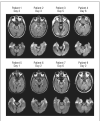Emerging viral infections of the central nervous system: part 1
- PMID: 19667214
- PMCID: PMC2873855
- DOI: 10.1001/archneurol.2009.153
Emerging viral infections of the central nervous system: part 1
Abstract
In this 2-part review, I will focus on emerging virus infections of the central nervous system (CNS). Part 1 will introduce the basic features of emerging infections, including their definition, epidemiology, and the frequency of CNS involvement. Important mechanisms of emergence will be reviewed, including viruses spreading into new host ranges as exemplified by West Nile virus (WNV), Japanese encephalitis (JE) virus, Toscana virus, and enterovirus 71 (EV71). Emerging infections also result from opportunistic spread of viruses into known niches, often resulting from attenuated host resistance to infection. This process is exemplified by transplant-associated cases of viral CNS infection caused by WNV, rabies virus, lymphocytic choriomeningitis, and lymphocytic choriomeningitis-like viruses and by the syndrome of human herpesvirus 6 (HHV6)-associated posttransplantation acute limbic encephalitis. The second part of this review begins with a discussion of JC virus and the occurrence of progressive multifocal leukoencephalopathy in association with novel immunomodulatory therapies and then continues with an overview of the risk of infection introduced by imported animals (eg, monkeypox virus) and examples of emerging diseases caused by enhanced competence of viruses for vectors and the spread of vectors (eg, chikungunya virus) and then concludes with examples of novel viruses causing CNS infection as exemplified by Nipah and Hendra viruses and bat lyssaviruses.
Figures






References
-
- Olival KJ, Daszak P. The ecology of emerging neurotropic viruses. J Neurovirol. 2005;11(5):441–446. - PubMed
-
- Patz JA, Campbell-Lendrum D, Holloway T, Foley JA. Impact of regional climate change on human health. Nature. 2005;438(7066):310–317. - PubMed
-
- Global Polio Eradication Initiative Web site. Wild poliovirus weekly update. [Accessed May 1, 2009]. http://www.polioeradication.org/casecount.asp.
Publication types
MeSH terms
Grants and funding
LinkOut - more resources
Full Text Sources
Medical

